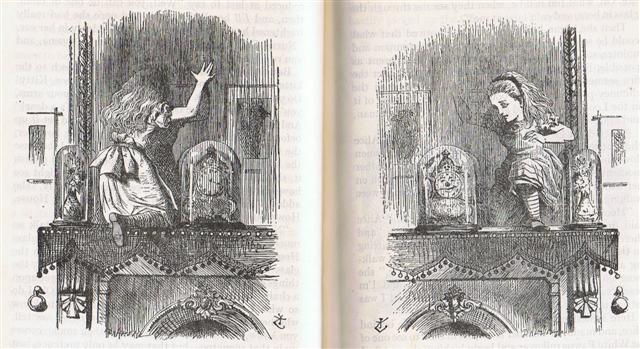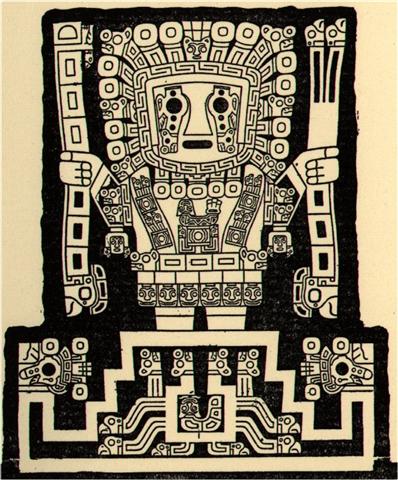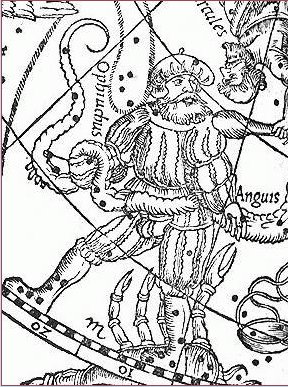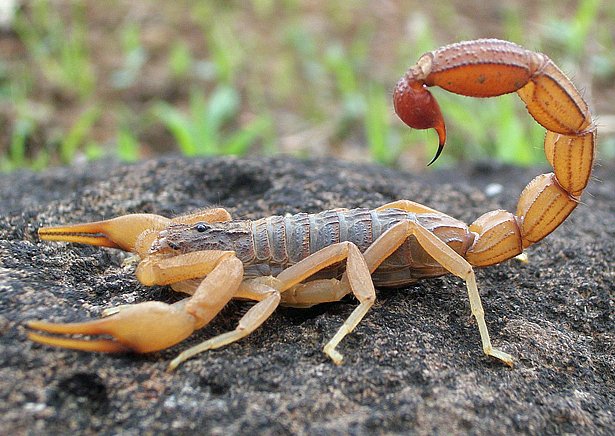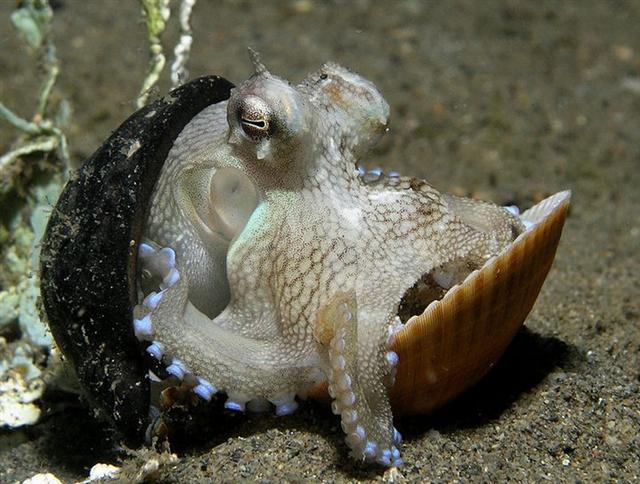Once upon a time Aldebaran would have served as the leader (leading star) at the beginning of the northern Sun season with Antares arriving at the beginning of the opposite half of the year. But south of the equator Antares (Ana-mua, the 'star pillar in front') was at the beginning of the Sun season with Aldebaran (Ana-muri, the star pillar at the rear) arriving at the end of summer. This was known by the Polynesians.
The beginning of side a was at May 24, day 144 (= 12 * 12) counted from January 1, and this was in the season when the Sun was present north of the equator. The basic ancient ideas could not be changed, for instance was Christmas celebrated in December even though it was a month of high summer south of the equator. Antares in the Scorpion was both at the end of the northern summer and at the beginning of the southern summer.
November 25, at heliacal Antares, was day 329 (where 32 * 9 = 288 = 2 * 144) counted from January 1. In rongorongo times Antares and Aldebaran were located 64 days later in the year due to the effects of the precession. 265 (SEPTEMBER 22) + 64 = 329 (November 25) and 84 (MARCH 25) + 65 = 148 (May 28). Above I have added more precise information regarding when the stars were due to rise as counted from March 21 (our convention for spring equinox). For instance was Antares rising with the Sun 249.1 days after the northern spring equinox and Aldebaran 68.2 days after March 21. The numbers fit with the glyph day sequences if we truncate (cut off) the decimal fractions; this I have deduced from trial and error. We should notice that the positions of δ¹ and ε Tauri corresponded to (resembled) the positions of δ and ε Ophiuchi (the Serpent Carrier) half a year later. Such 'coincidences' are often no coincidences at all but deliberate clues given to us by their creator Bayer. He assigned appropriate Greek letters for all important stars. Presumably Bayer gave the letter lambda to Marfik (λ Ophiuchi) because this star rose heliacally in the same day as Antares - thus serving as a sign of Sun quickly vanishing down towards the south. The name Marfik means elbow and perhaps the curve of the elbow was regarded as a place where one ruler (one leader, one season) was finished off (decapitated) by the next in line. In the Gateway of the Sun in Bolivia there are heads hanging down at the elbows in a way which resembles (corresponds to) how the head of Algol was placed at the elbow of Perseus:
The Bull constellation had been at MARCH 21 when the Scorpion together with the Serpent Carrier had been at SEPTEMBER 22.
Most birds could be observed to follow the Sun down when he flew south in autumn (fall). It then became as quiet as when a dark cloth was thrown over a bird cage. When the man, Ulu, returned to his wife from his visit to the temple at Puueo, he said, 'I have heard the voice of the noble Mo'o, and he has told me that tonight, as soon as darkness draws over the sea and the fires of the volcano goddess, Pele, light the clouds over the crater of Mount Kilauea, the black cloth will cover my head. And when the breath has gone from my body and my spirit has departed to the realms of the dead, you are to bury my head carefully near our spring of running water. Plant my heart and entrails near the door of the house. My feet, legs, and arms, hide in the same manner. Then lie down upon the couch where the two of us have reposed so often, listen carefully throughout the night, and do not go forth before the sun has reddened the morning sky. If, in the silence of the night, you should hear noises as of falling leaves and flowers, and afterward as of heavy fruit dropping to the ground, you will know that my prayer has been granted: the life of our little boy will be saved.' And having said that, Ulu fell on his face and died. His wife sang a dirge of lament, but did precisely as she was told, and in the morning she found her house surrounded by a perfect thicket of vegetation. 'Before the door,' we are told in Thomas Thrum's rendition of the legend, 'on the very spot where she had buried her husband's heart, there grew a stately tree covered over with broad, green leaves dripping with dew and shining in the early sunlight, while on the grass lay the ripe, round fruit, where it had fallen from the branches above. And this tree she called Ulu (breadfruit) in honor of her husband. The little spring was concealed by a succulent growth of strange plants, bearing gigantic leaves and pendant clusters of long yellow fruit, which she named bananas. The intervening space was filled with a luxuriant growth of slender stems and twining vines, of which she called the former sugar-cane and the latter yams; while all around the house were growing little shrubs and esculent roots, to each one of which she gave an appropriate name. Then summoning her little boy, she bade him gather the breadfruit and bananas, and, reserving the largest and best for the gods, roasted the remainder in the hot coals, telling him that in the future this should be his food. With the first mouthful, health returned to the body of the child, and from that time he grew in strength and stature until he attained to the fullness of perfect manhood. He became a mighty warrior in those days, and was known throughout all the island, so that when he died, his name, Mokuola, was given to the islet in the bay of Hilo where his bones were buried; by which name it is called even to the present time. (Joseph Campbell, The Masks of God: Primitive Mythology.)
Probably the hatchmarked 'stick' in front in Ga7-13 was intended to illustrate a dark season:
There were 29 days from November 22 to the December solstice. 355 - 326 = 29.
Phoenician lamedh was drawn similar to Phoenician gimel, but oriented in the opposite direction - like a mirror image:
These could have inspired the signs for increasing (expansion, hora) and decreasing (retraction, peke): < >
... Ta'aroa's first act was to construct a firm foundation for the earth, using the strong second shell for stratum rock. The shell Rumia became his dwelling place, the overarching dome of the sky. It was a confined sky enclosing the world just forming, and in its deep and abiding night the lad attained manhood. There were no Sun, Moon, or stars and only one other living creature, the Great Octopus [8 feet]. The sun was held down close above the slowly evolving earth by the Great Octopus, Tumu-rai-fenua, Foundation of Heaven and Earth, who lived in the primeval waters on which the earth floated. One of his arms was to the north, one to the south, one to the east and another to the west. With these vast arms he held the sky, the shell Rumia, close down against the earth ... (Makemson, The Morning Star Rises.) |
|||||||||||||||||||||||||||||||||||||||||||||||||||||||||||||||||||||||||||||||||||||||||||
